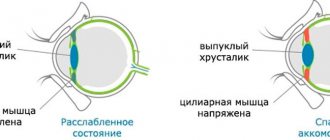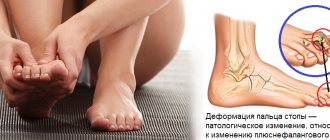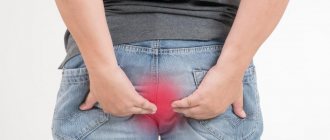Chronic headache is the name used in medical practice for systematic pain in the back of the head and temples for two or more weeks. It comes in several types: chronic migraine, abusive pain and others.
Cephalgia (headache) can bother you for several months in a row, severely exhausting the body: weakness, depression, fatigue, apathy, insomnia, etc. appear. Every 20th patient experiences this disease, and in women the symptoms appear more often.
Causes
Why does my head hurt? Common causes of headaches are:
- neck muscle spasm;
- compression of the vessels of the head and neck;
- compression of the membranes of the brain;
- brain nutritional disorders: insufficient blood supply, narrowing of blood vessels supplying the brain;
- smoking, poisoning with alcohol, drugs, medications;
- stress, sleep disturbance;
- due to neck and head injuries;
- birth injuries;
- anomalies in the development of blood vessels in the neck and head.
Primary headaches
| Name | Symptoms |
| Migraine | Throbbing pain in the head, most often occurring after sleep. The severity of the headache ranges from moderate to unbearable. The pain is felt on one side of the head: in the right or left temple, forehead, crown. Migraine lasts up to three days, often accompanied by nausea and vomiting. A person does not tolerate bright light and loud sounds. Migraines can be caused by stress, insomnia, or changes in weather. The tendency to migraine is inherited. |
| Tension headache (TTH) | A pressing headache covers the entire head or separately the back of the head, crown, forehead. Cephalgia can be severe. A tension headache attack can last up to 7 days. At the same time, my head hurts every day. TTH occurs due to emotional or physical stress. |
| Cluster headache | Unbearably strong shooting pain in the head. It is felt on one side, in the forehead and eye area. Cluster pain causes redness and swelling of the face and lacrimation on the pain side. Due to a severe headache, a person behaves restlessly. |
| Headache and facial pain due to trigeminal neuralgia | Very strong short-term stabbing pain in the head. The pain is felt in the crown, forehead, and can affect the face and teeth. The headache attack lasts several hours. In this case, spasm of the facial muscles may occur. |
Causes of chronic headaches
Systematic cephalalgia can be caused by constant overwork, depression, and severe stress. Other factors can also provoke the development of illness: heredity and predisposition, excessive consumption of alcohol or energy drinks, excess weight, and even snoring. In addition, pain signals may not be suppressed due to malfunctions in certain areas of the brain.
Sometimes chronic headaches are the body’s reaction to serious illnesses: vasculitis, stroke, high intracranial pressure, traumatic brain injury and others. Incorrectly selected treatment can provoke the development of abusive cephalgia.
Secondary
Secondary headaches can be a sign of other diseases. Most often it is caused by the following diseases:
| Cause of headache | Manifestations of the disease |
| Cervical osteochondrosis | Headache appears with a sharp turn of the head, prolonged neck tension, or an uncomfortable position of the head during sleep. The pain intensifies in the morning, often spreading to one side of the head. May be accompanied by hearing loss in one ear, tinnitus, and spots before the eyes. |
| Flu or cold | The headache is not very severe, localized in the forehead, eyes, temples on one or both sides. In addition to the headache, the patient’s temperature rises above 37 degrees, a runny nose, cough, sore throat and other cold symptoms appear. |
| Increased intracranial pressure | Prolonged frequent headaches are combined with nausea and vomiting. A person often feels sick in the morning. If these symptoms and mild headaches occur, you should consult a doctor. |
| Brain concussion | The headache may last for several years after the injury. Accompanied by anxiety, irritability, decreased concentration, and dizziness. The person may suffer from depression. |
| Vegetovascular dystonia | Causes dizziness, nausea, neurotic disorders, and surges in blood pressure. Exacerbations occur with weather changes and emotional overload. |
| Hypertonic disease | A bursting headache is felt in the back of the head. Combined with heat in the head, dizziness, noise in the head, spots before the eyes, staggering. A person may feel nausea and heart pain. |
| Sinusitis, sinusitis, sinusitis | Chronic long-term pressing headaches in the forehead, eyes, cheeks. Accompanied by nasal congestion, runny nose, and slight fever. |
| Horton's headache | Characterized by attacks of severe boring pain. It spreads around the eye, temple and forehead. The attacks usually occur at the same time. This type of headache is more common in men. |
| Hypertonic disease | A bursting headache is felt in the back of the head. Combined with heat in the head, dizziness, noise in the head, spots before the eyes, staggering. A person may feel nausea and heart pain. |
Diagnosis and treatment of chronic headaches
A correct diagnosis guarantees quick and successful treatment of chronic cephalgia. A highly qualified specialist will perform a physical examination and if no concomitant diseases causing headaches are identified, he will refer the patient to undergo diagnostic procedures and tests.
In some cases, an MRI, CT scan, or EEG may be necessary. Electroencephalography helps detect inflammation and brain injury. Only in this way, after establishing an accurate diagnosis, can you select an effective and safe treatment.
Self-medication with over-the-counter medications and folk remedies does not eliminate the problem of chronic headaches. Unconventional methods only mask the symptoms, bringing short-term relief.
For diagnosis and treatment of chronic headaches, contact your healthcare provider.
When you can't put off visiting a doctor
- For an acute headache that suddenly arose and resembles “a blow to the head.” This may be a symptom of subarachnoid hemorrhage. Call an ambulance immediately.
- The pain intensifies when lying down and goes away half an hour after getting out of bed. This is a sign of impaired outflow of cerebrospinal fluid, increased intracranial pressure, and a tumor.
- If the headache appears regularly, is intense, is associated with changes in body position and changes with movement.
Chronic daily headache (CDH) is a syndromic diagnosis that combines various types of headaches that occur 15 or more times a month for more than 3 months. The prevalence of CEHD in the adult population is 4%, with 1–2% of the population misusing analgesics due to CEHD [12]. In the Russian population, the prevalence of CEHD appears to be higher: in a large epidemiological study conducted in Rostov-on-Don, its prevalence was 16% [5]. The incidence of patients with CEHD at appointments with neurologists and therapists in Russia is 37% [2].
Both primary and secondary forms of headache can be chronic. Primary chronic headaches can be divided into long-term headaches (the headache lasts 4 or more hours a day) - chronic migraine, chronic tension-type headache (TTH), new daily persistent headache, hemicrania continua; and short-term (HA lasts less than 4 hours a day) - chronic fascicular headache, chronic paroxysmal hemicrania, chronic SUNCT (Short-lasting, Unilateral, Neuralgiform headache with Conjunctival injection and Tearing - short-term unilateral neuralgic type headache with redness of the conjunctiva of the eye and lacrimation). Among secondary headaches, the most common causes of chronic cephalgia may be drug-induced (abuse) headache, post-traumatic headache, cervicogenic headache, and headache with rhinosinusitis. A common clinical mistake is to consider organic brain pathology as the leading cause of CEHD, such as dyscirculatory encephalopathy, atherosclerosis of cerebral vessels, osteochondrosis of the cervical spine, vegetative-vascular dystonia, post-traumatic encephalopathy, hypertensive-hydrocephalic syndrome [9]. It is important to emphasize that 87% of patients with CEHD have chronic, transformed migraine, often complicated by abuse of analgesic drugs [11].
Diagnosis of the chronic primary form of headache, especially migraine, is very difficult. For example, in patients with chronic migraine, unilateral, pulsating, intense headache with accompanying symptoms in the process of transformation becomes bilateral, less intense, with less severity of nausea, vomiting, photo- and phonophobia, i.e., according to clinical criteria, it is more reminiscent of tension headache. During the transformation of migraine, such features of a migraine attack remain relatively intact as the pulsating nature of the pain, increased pain during physical activity, nausea, typical triggers (changes in weather, eating certain foods, disturbances in sleep patterns, etc.) and sensitivity to specific anti-migraine drugs. triptans [17]. Below are the diagnostic criteria for transformed and chronic migraine.
Transformed migraine [17]:
• GB > 15 days per month, more than a month;
• headache duration > 4 hours per day (without treatment);
• one of the following symptoms:
• history of episodic migraine;
• increased frequency of attacks over at least the last 3 months;
• current headache meets the criteria for migraine (except for the duration of the attack);
• not associated with another disease.
Chronic migraine 2 * , 2004):
• migraine without aura 15 days a month or more for more than 3 months;
• not associated with another disease.
Chronic migraine (ICHD-2R, 2006):
• headache > 15 days per month for more than 3 months;
• more than 5 attacks meeting the criteria for migraine without aura;
• more than 8 days a month for more than 3 months headache that meets the criteria for migraine without aura and/or relieved with ergotamine or triptans;
• can be with or without abuse of analgesics;
• HD is not associated with another disease. The criteria for transformed migraine are convenient for use in clinical practice, since they allow identifying the process of transformation, although they do not allow excluding drug-induced headache. The ICHD-2 criteria for chronic migraine make it possible to exclude drug-induced headache, but are difficult to apply in clinical practice, since during the transformation process, migraine loses its typical features and ceases to meet the criteria for episodic migraine without aura. The revised ICHD-2 criteria (2006) [6] take into account the presence of chronic headache (more than 15 days per month), which includes cephalgia that meets the criteria for migraine without aura (at least 8 days per month), and provides for the possibility of drug abuse. Despite all the difficulties, the diagnosis of chronic migraine and its differential diagnosis with chronic tension headaches are extremely important, since this opens up opportunities for specific therapy for patients suffering from migraine.
Establishing the form of chronic headache includes the following steps:
1. Exclusion of secondary causes of hypertension using clinical and neurological examinations taking into account symptoms (“red flags”). If necessary, additional diagnostic methods are used.
2. Syndromic diagnosis of primary CEHD and its classification depending on the duration of headache (more or less than 4 hours a day).
3. Identification of the form of primary headache that has become chronic. To do this, it is necessary to find out from the patient what type of headache was noted in him at the onset of the disease, which can be very difficult, since the transformation process can take many months and even years. Secondary headache red flags include:
• the occurrence of headache after physical stress, severe coughing or sexual activity;
• presence of accompanying symptoms – change in level of consciousness (stupefaction, confusion or memory loss);
• progressively increasing headache;
• presence of focal neurological signs or symptoms of systemic disease (fever, arthralgia, myalgia);
• onset of headache after the age of 50 years;
• sudden onset of new, unusual for this patient, severe headache;
• any abnormalities on neurological or general examination.
The main strategy for the prevention and treatment of CEHD is to control the factors of its chronification, which are divided into controlled and uncontrolled. Uncontrollable risk factors include gender (female), low educational and socioeconomic status, head injury, and stressful life events. Controlled risk factors include a high frequency of headache attacks, analgesic abuse, depression, snoring, and obesity [10]. The goal of preventive therapy for CEHD is to control the number of days with headache per month and reduce the level of patient maladjustment. When prescribing preventive therapy, it is necessary to inform the patient that even the most effective means may not completely relieve him of hypertension, and a positive effect of treatment is considered to be a reduction in the frequency of attacks by more than half. To control the number of days with cephalgia, as well as the amount of painkillers taken, patients need to keep a diary or headache calendar. The patient's maladjustment is assessed using the MIDAS (Migraine Disability Assessment) and HIT-6 (impact of headache on daily activities) scales.
For migraine, prophylactic therapy is prescribed if attacks cause a decrease in daily activities for two or more days per month, despite their optimal control. Prevention is also indicated in cases of high risk of developing headache associated with abuse of drugs for its relief, even if these drugs are effective. The drug of choice for the treatment of CHEB should have the best proven effectiveness. For the prevention and treatment of chronic migraine, the drugs of choice are anticonvulsants (topiramate 25–100 mg/day), antidepressants (amitriptyline 10–100 mg/day), β-blockers (metoprolol 50–100 mg 2 times a day or propranalol 80 mg 1 time per day – 160 mg 2 times a day) and calcium channel blockers (flunarizine 5–10 mg/day) [8].
If these drugs are ineffective or intolerable, you can use drugs from other classes - antidepressants from the group of selective serotonin and norepinephrine reuptake inhibitors (SNRIs; duloxetine, venlafaxine), dihydroergocriptine drugs (Vasobral), botulinum toxin drugs, dopamine receptor antagonists, some vitamins, minerals and herbs drugs (magnesium dicitrate 600 mg/day, riboflavin 400 mg/day, coenzyme Q10 300 mg/day, Petadolex 100–150 mg/day), but the degree of evidence of the effectiveness of these drugs is less. For the treatment of chronic tension-type headache, the drug of choice is amitriptyline (10–100 mg/day) [15].
Treatment of CEHD is a difficult task for both the patient and the doctor. The need for long-term daily use of the drug, the occurrence of side effects, and the absence of the final goal of treatment lead to a decrease in patient adherence to therapy. Thus, it was shown that while 54% of patients with chronic migraine were satisfied with the results of treatment aimed at relieving headache attacks, only 24% were satisfied with preventive treatment [19]. According to a large epidemiological study conducted in the USA, only 13% of patients who needed migraine prevention received adequate therapy [14].
Methods for discontinuing painkillers when they are abused by patients with CEHD are controversial today. One of the methods of discontinuing drugs that caused abuse is the use of a “drug bridge” - a short course of preventive therapy to reduce withdrawal symptoms. Is it necessary to prescribe a “medical bridge”, and should it be carried out in a hospital setting or on an outpatient basis? Should I stop taking the painkiller at once, or reduce the dose gradually? All these questions require clarification. In the hospital, intravenous administration of dihydroergotamine, acetylsalicylic acid, neuroleptics, valproic acid, amitriptyline or corticosteroids is used as a “medical bridge” when refusing painkillers. The pain syndrome is relieved with the help of non-steroidal anti-inflammatory drugs. The “medical bridge” can also be carried out in an outpatient setting, where the patient can take tablet forms of corticosteroids.
Long-term preventive therapy is prescribed simultaneously with a “medical bridge” for a period of 6–12 months. Treatment should begin with minimal doses, then increase the dose until a clinical effect is obtained or side effects develop. Throughout the entire period of therapy, it is necessary to use the drug in an adequate dose. The effectiveness of preventive therapy is assessed based on data from a headache diary. It is necessary to warn the patient that 2–3 months is the minimum period for the development of the effect of most migraine prevention medications; therefore, one should not refuse to take the drug if it appears ineffective in the first weeks. After 6 months of effective treatment, the drug can be gradually, slowly withdrawn. Migraine prevention medications should not be taken for more than 1 year.
In the presence of depression, as well as in the case of chronic tension-type headache, the drugs of choice are tricyclic antidepressants (TCAs). When prescribing TCAs to patients with migraine and depression, it is important to consider that the doses of TCAs recommended for the treatment of depression are higher than those needed for the prophylactic treatment of migraine and, therefore, are less well tolerated by patients. If TCAs are poorly tolerated, an alternative to their use may be the use of selective serotonin reuptake inhibitors (SSRIs) and SNRIs, although these drugs have only been proven to be effective for migraine prevention in small studies. SSRIs and SNRIs can be used in combination with anticonvulsants or calcium channel blockers and do not cause weight gain [3, 7].
Patients should avoid taking drugs that contribute to the development of CHB (combined analgesics; drugs containing opiates; barbiturates; caffeine). Insufficient adherence of patients to doctor's recommendations is the main reason for ineffective preventive therapy: patients either take doses lower than therapeutic ones, or the duration of treatment is insufficient. In the absence of the effect of preventive therapy, it may be necessary to reconsider the diagnosis of chronic headache.
If monotherapy is insufficiently effective, rational combination pharmacotherapy can be used. The most effective combination for the treatment of refractory migraine is considered to be a combination of anticonvulsants and antidepressants. It must be taken into account that TCAs can lead to weight gain; therefore, in patients with excess body weight and depression, it is better to combine TCAs with topiramate. The latter can also be used in combination with SNRIs, antihypertensive drugs or other anticonvulsants. If necessary, patients with migraine can use other anticonvulsants with analgesic effects (gabapentin, pregabalin or lamotrigine), although their effectiveness for migraine is lower. In case of insufficient effectiveness of anticonvulsants, patients with migraine are additionally prescribed β-blockers or calcium channel blockers. However, the combination of TCAs and β-blockers or calcium channel blockers is not optimal, as it can lead to prolongation of the PR and QT intervals, weight gain and decreased exercise tolerance [1, 7, 16].
If drugs with proven anti-migraine activity are ineffective, alternative and complementary treatment methods may be used. In this case, preference should be given to non-drug methods, in particular educational programs. A patient with CEHD must be provided with information about the disease, its favorable prognosis, the absence of signs of serious brain pathology (tumor, stroke), as well as the dangers of abusing drugs to relieve headache. Often, impressions of the effectiveness or ineffectiveness of the drug are subjective, so patients should keep a diary or calendar of headaches. By keeping a diary, the patient himself will note the effect of treatment, which will significantly increase his adherence to therapy, while the attending physician will receive objective information. It is important to set the patient up for a realistic expectation of treatment results, although many clinicians note that using preventive therapy not only reduces the number of days with headache, but also reduces the intensity and duration of attacks, increases sensitivity to drugs for their relief, which significantly reduces the degree of maladaptation of patients [ 4, 18].
A well-known fact is the comorbidity of chronic migraine with many somatic and neurological diseases - arterial hypertension, depression, anxiety, obesity. From a clinical point of view, it seems attractive to select a drug for the preventive treatment of chronic migraine, taking into account the comorbid disease: monotherapy reduces the risk of side effects and is better tolerated. However, monotherapy for chronic migraine, taking into account the comorbid disease, should be rational. Thus, taking a drug for the treatment of chronic migraine is not always optimal in relation to the comorbid disorder - the dose may be insufficient or excessive (for example, smaller doses of amitriptyline are effective for the treatment of chronic migraine than for the treatment of depression). On the other hand, adhering to the principle of monotherapy, preference should not be given to second-line drugs (for example, treatment of chronic migraine and panic disorder with SSRIs), since this may lead to the need to increase the dose and prescribe other drugs.
It may be that the best management option for patients with chronic migraine and comorbid disorders is to treat both conditions optimally with two classes of drugs, taking into account drug interactions (eg, topiramate for chronic migraine and SSRIs for depression).
Preventive therapy for chronic forms of trigeminal autonomic cephalgia deserves special attention. The drug of choice for the treatment of chronic cluster headache is verapamil. The initial dose is 240 mg/day, the maximum therapeutic dose is 720 mg/day. Lithium preparations are effective for 78% of patients with chronic cluster headache, but are much less well tolerated. The initial dose of lithium is 300 mg 2 times a day, the therapeutic dose is 120 mg/day. If these drugs are ineffective, patients with a chronic cluster can use topiramate (50–200 mg/day), methysergide (2 mg/day), melatonin (3–10 mg/day), valproic acid (1000–2500 mg/day) [13 ]. Paroxysmal hemicrania is a form of trigeminal autonomic cephalgia, sensitive to indomethacin. In the case of chronic paroxysmal hemicrania, verapamil and topiramate can be used [13].









